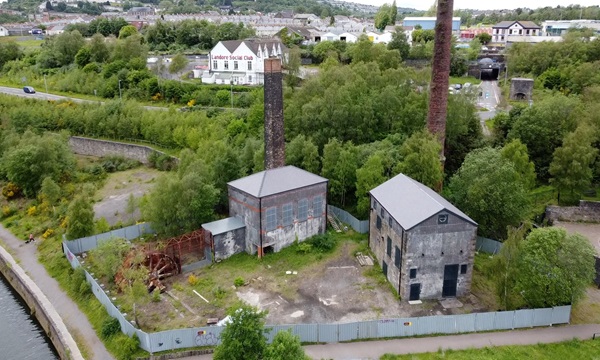Plans have been unveiled for the future of three historic buildings that form part of Swansea’s industrial heritage.
Swansea Council wants to save and transform the disused structures as part of its work to bring new life to the Lower Swansea Valley.
It’s all part of the council-driven £1 billion regeneration of Swansea which has already seen the saving and transformation of other heritage structures including the Palace Theatre building, Albert Hall and Hafod Morfa Copperworks powerhouse.
Two planning applications have just been submitted by the council for the copperworks’ Vivian and Musgrave Engine Houses, and for the V&S No.1 Locomotive Shed. All three have listed status.
The applications state: “The engine houses form an integral part of Swansea’s industrial heritage. The council wishes to bring them back into use.
“Also, the council wishes to undertake restoration works to the loco shed – and eventually see it brought back into meaningful use.”

The copperworks of past centuries were key to the growth of Swansea, playing a crucial role as major industry over around 300 years. The industry declined but some of its buildings and other structures remain.
The plan now is to redevelop and restore buildings for new uses and to improve access to them. There would also be work to preserve two tall neighbouring chimneys.
The council saved the two engine houses from ongoing decay several years ago. A new river pontoon was added nearby.
The Musgrave structure, built around 1910 and a scheduled ancient monument, contains the rare Musgrave Engine, the UK’s only one of its kind remaining in its original location.
Plans show that the engine’s external elements would have a covered shelter to enable the machinery’s future restoration.

The plans show that the Vivian Engine House, built in 1860, would feature a mezzanine floor.
A new building would link the two engine houses. There’d be an outdoor terrace area.
The engine houses would, in future, be suitable for a range of uses, including restaurants and cafes, exhibition-style space and shops.
The loco shed – also dating from the 1800s – was possibly last used around 1980 as a locomotive shed at the former copperworks.
Its planning application is for the restoration and reconstruction of the existing building which has become structurally damaged through its many years of disuse.

There’d be work on the walls, roof and doors. There’d be a range of possible future uses.
Other associated works for the three structures, should planning permission be granted, would include new access routes from the copperworks site, sustainable new drainage, and landscaping.
There’d be expert surveys of trees and other biodiversity.
Public feedback is now welcome on the plans.

Swansea Council is working on a series of schemes in the River Tawe corridor, including these three buildings.
The schemes are being funded with £20m from the UK Government’s Levelling Up scheme.
The Lower Swansea Valley project, with a close focus on the site of the copperworks, aims to result in more wealth and greater local connectivity.
It’ll help tell the story of Swansea’s rich industrial legacy to new generations.
Consultants for the council’s copperworks plans are the South Wales team of widely respected Wardell Armstrong.
